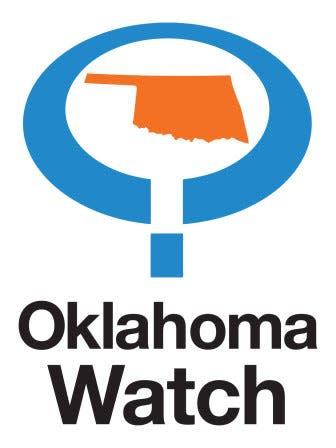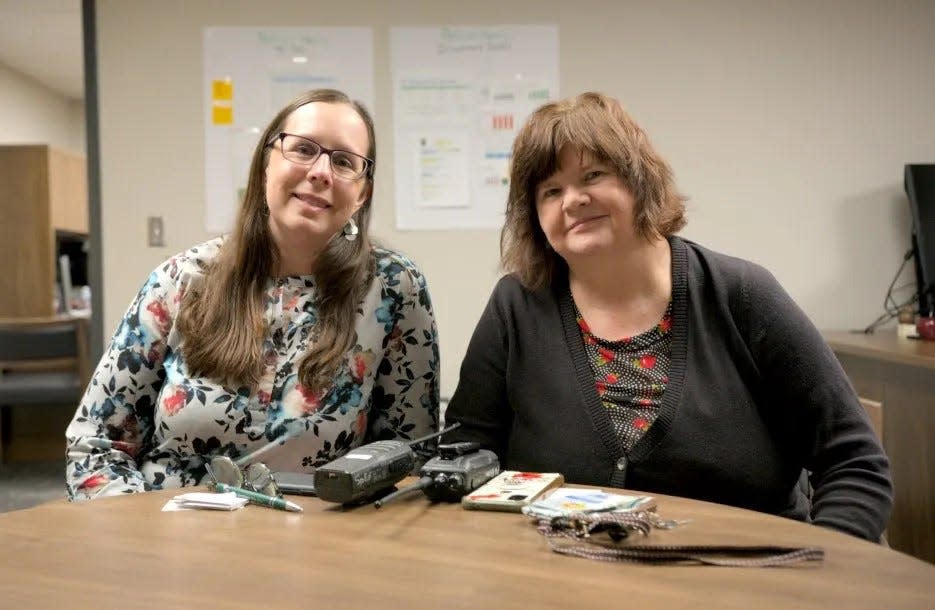When fifth-grader Mohammed Fáizy walked into his Tulsa school, just months after fleeing Afghanistan, he didn’t speak, read or write English.
He faced the prospect of learning the language while adjusting culturally and catching up on the core subjects of reading, writing, science and math.
Although government support of recent Afghan refugees is strong, refugee students from other countries face identical barriers without the same level of federal help.
Across Tulsa Public Schools, 261 Afghan children enrolled in Pre-K through 12th grades about the same time as Fáizy, and were thrust into the same challenge. More than 100 additional Afghan students enrolled in Putnam City, Edmond, Stillwater and Jenks Public Schools, state records show.
Federal policy changes since 2020 led to increased refugee arrivals, according to a June report by the Migration Policy Institute. State data shows that as of early November, about 40% of Oklahoma’s 4,074 refugees supported with federal money over the last three years were school-aged children, mostly from Afghanistan.
But refugees arrived in Oklahoma from more than 20 countries in the past three years, and while schools have resources to help all refugee children, including specialized English Language Development teachers and books translated into various languages, there is federal money available to schools to help Afghans specifically, leaving students from countries such as Cuba, Haiti, Myanmar, and the Democratic Republic of the Congo without the same level of support.

Since 2020, the amount of money Oklahoma has received from the federal government for long-term refugee support services has increased by 3,142%. What used to be a funding pool of about $830,000 in 2020 grew to $26.8 million this year, state records show.
Of the $16 million awarded to nonprofit and state organizations for refugee support services, $1.3 million went to public school districts in the Oklahoma City and Tulsa metros and Stillwater.
With few exceptions, that money is restricted to their Afghan students, forcing educators to spend creatively so they can help the most students without violating funding guidelines.
District officials hired additional English Language Development teachers and English-speaking Afghan refugees as family liaisons. They also funded summer school courses for students, training programs for teachers, family social events and field trips.
Toni Hill is a full-time English Language Development instructor at Tulsa’s Patrick Henry Elementary alongside her colleague, Bethany Henretty, who was hired part-time in light of the recent increased number of English learning students. Together they support 100 children, including Fáizy, with in-class assistance on assignments, separate supplemental group classes and at-home tutoring.
Hill works with students in third through fifth grades on reading and writing skills. Henretty helps students in kindergarten through second grade develop very basic vocabulary and pronunciation. Both teachers said overcoming the language barrier early is essential to help students feel safe and like they are in an environment in which they can learn.
More: Shawnee’s Grand Casino helping Afghan refugees with steady work, transportation
Hill said the first weeks and months children from Afghanistan were arriving at Patrick Henry were the most difficult.
“During that time, these students were coming in with a lot of trauma,” Hill said, “We had students that were trying to run out the doors that were not understanding what we were trying to do, that we were friends and that we were here to protect them.”
She said it’s important to consider the students’ perspectives when trying to teach them.
“If I was in a strange country and I’m sitting in a classroom and I’m hearing all these things and I have no idea what’s being said, and I’m trying to communicate, wanting people to understand, I’d be frustrated too,” Hill said.
To help Afghan students, Tulsa Public Schools hired eight Afghan refugees to facilitate communication among the district, schools, students and families.
Two of the refugees are navigators, who help with district-level communication to families. They translate things such as bus routes and any correspondence and documents sent home with students. The other six, known as liaisons, work inside schools and bridge understanding gaps between school staff and students.
Mia Qadri is the refugee liaison at Patrick Henry. Hired last March with federal money, he took the opportunity to use his English proficiency and experience as an educator in Afghanistan to help make life easier for the Afghan students in Tulsa.
More: Their education came to a halt in Afghanistan. An Oklahoma school gave them a new start.
Qadri follows a daily schedule, visiting four to five classrooms of various grade levels, and helps Afghan students with their assignments in real-time. He is also on call while on campus, just in case he is needed to help translate when students are being disciplined, or there is an emergency and non-English speaking family members need to be contacted.
He said most Afghan students received an education while living in their home country. The exceptions being some who lived in remote areas.
“Especially in south and southeastern Afghanistan, there were no schools,” Qadri said. “If there were schools, they didn’t have buildings, they were studying in tents.”
He said Afghan students enrolled at Patrick Henry have made noticeable improvements in their English skills in the past year, and consequently improved in other core subjects such as science and math. One reason is the encouragement they get from their parents, who want their children to take advantage of the opportunity to get an education, he said.
“Most of the parents are not educated,” Qadri said. “So they are happy their kids will be educated and will have a bright future.”
Students such as Fáizy are on a path to that future, said Patrick Henry’s principal Jene’ Carpenter, during a short tour of some of the classrooms where Afghan students participated seamlessly alongside their peers.
Fáizy, who Carpenter said knew only a few English words when he enrolled in Patrick Henry, was reading aloud about how matter can change physically and chemically in Michele Fischer’s fifth-grade class. All educational materials provided to refugee students, regardless of their country of origin, are in English. While the school’s Afghan refugee liaison can help translate some classwork for Afghan students, most translations occur when teachers, counselors, nurses and other school staff need to communicate with parents about their children.


Hill and Henretty agreed that Qadri’s help has been the most important element in ensuring the success of the Afghan children in the classroom. But of the 100 English learners at Patrick Henry, only 35 are from Afghanistan. The rest are from Latin American, African and Asian countries.
While the school has a robust curriculum to help students from places other than Afghanistan, Hill said, teachers don’t have designated liaisons to help them communicate with students or their families. Instead, the English Language Development teachers use over-the-phone translation services, which are less reliable.
“We have a special curriculum through National Geographic that we utilize in the classroom to teach the basics of the English language,” Hill said. “We get dictionaries and books translated in the languages Afghans speak, for example, but we have those same books translated into Spanish, Chinese and various other languages.”
Educators at Stillwater Public Schools used federal money to hire three language-interpreting teacher assistants and pay E.L. Achieve, a consulting and curriculum company, for cultural training for teachers to help them build lesson plans that are suited to English learners from Afghanistan.
Stephanie Coca, the district’s multilingual program coordinator, said the increased money was immensely helpful. The district has 25 Afghan students and an increasing number ofstudents from Spanish-speaking countries, she said, and the training helps them all.
Professional development is helping teachers present subject matter in a way that acknowledges every student is learning each subject’s jargon
“Science has a specific language: laboratories, beakers, the scientific method, all those things are new terms for everyone,” Coca said. “It’s looking at your lesson plan, at the language that you’re teaching students, and helping them prepare to understand that language and practice it.”
She is one of two educators undergoing the training now, but more teachers will get the training as Afghans age and enroll in their classes.
Coca said that while many Afghan students enrolled in Stillwater Public Schools in 2022, and the money to support them provided necessary resources, most refugee students enrolling in Stillwater Public Schools today are Venezuelan.
But the kind of help afforded to Fáizy and other Afghan students doesn’t extend to them.
“Gosh,” Coca said. “If I could do this for our Venezuelan families, for all of our new families, it’d be a game changer.”
—————
Lionel Ramos is a Report for America corps member who covers race and equity issues for Oklahoma Watch. Contact him at 405-905-9953 or [email protected]. Follow him on Twitter at @LionelRamos_.
Oklahoma Watch, at oklahomawatch.org, is a nonprofit, nonpartisan news organization that covers public-policy issues facing the state.
This article originally appeared on Oklahoman: Refugees have arrived in Oklahoma from more than 20 countries in 3 years

Amanda Smith is a dedicated U.S. correspondent with a passion for uncovering the stories that shape the nation. With a background in political science, she provides in-depth analysis and insightful commentary on domestic affairs, ensuring readers are well-informed about the latest developments across the United States.







